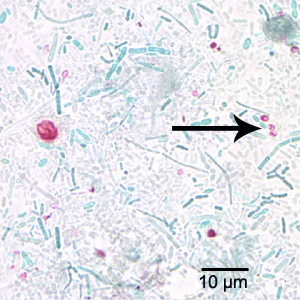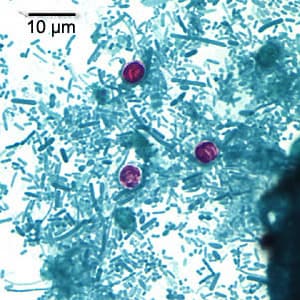
Case #143 - November, 2004
A 45-year-old man, HIV positive, went to his health care provider with complaints of abdominal cramping, occasional watery diarrhea, and noticeable weight loss. The physician ordered an ova and parasites (O & P) examination. Fecal smears were prepared from formalin-fixed stools, stained by different techniques including Chromotrope 2R, and examined by a reference lab. The objects seen in Figures A-C are what was observed on the Chromotrope 2R stained smear at 1000× magnification. What is your diagnosis? Based on what criteria? What, if any, further examinations with other staining techniques would you recommend?
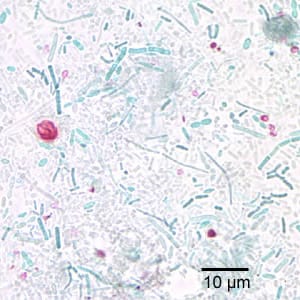
Figure A
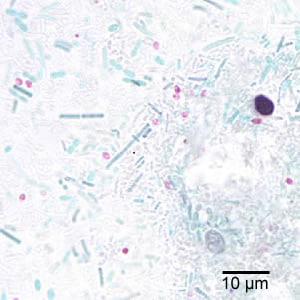
Figure B
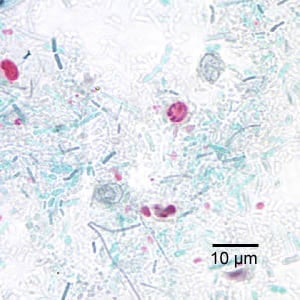
Figure C
Images presented in the monthly case studies are from specimens submitted for diagnosis or archiving. On rare occasions, clinical histories given may be partly fictitious.
DPDx is an educational resource designed for health professionals and laboratory scientists. For an overview including prevention, control, and treatment visit www.cdc.gov/parasites/.
Page last reviewed: August 24, 2016
Content source: Global Health, Division of Parasitic Diseases and Malaria
